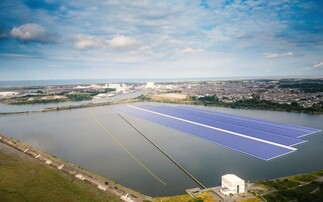News comes as Greg Barker and Michael Gove launch campaign to encourage more schools to fit solar arrays
The UK solar sector has installed around 1GW of new capacity across rooftops and land since the start of this year, despite the record levels of flooding that threatened to prevent developers meeting a planned subsidy cut this week.
A number of developers this week confirmed they managed to complete large scale arrays ahead of the 1 April deadline, when support falls from from 1.6 to 1.4 Renewable Obligation Certificates (ROCs) per MWh.
Paul Barwell, chief executive of the Solar Trade Association (STA), predicted large arrays accredited through the ROC system accounted for around three quarters of 1GW installed with the rest made up of smaller rooftop schemes registered under the feed-in tariff mechanism.
If the figures for latest installation figures are confirmed by Ofgem, it will mean the UK now has around 4GW of solar capacity installed, which is the equivalent electricity consumption of 1.2 million homes.
"Solar is continuing to deploy at higher rates both on domestic, commercial and industrial scale and we see this growth continuing throughout 2014," Barwell told BusinessGreen. "We have started to see some great examples of larger installs on commercial rooftops such as the new Jaguar Land Rover plant and the BMW-Mini plant, which together are close to 10MW. With the anticipated opening up of the mid-scale rooftop market which DECC is supporting, this is going to be a significant area of growth for the rooftop PV sector."
A number of solar developers were this week celebrating hitting the deadline, despite the major storms and flooding from December to February that threatened to delay project timelines. Solarcentury said it connected all of six solar parks to the grid ahead of April 1 despite the boggy ground created by flooding.
"Connecting the solar parks ahead of the ROC decrease was a monumental challenge, especially due to the worst flooding ever recorded in the UK that was experienced last winter," said Ben Kimber, head of groundmount projects at Solarcentury. "The achievement is a testament to the quality of our developments, the expertise of our project delivery team here at Solarcentury and the professional subcontractors we work with."
Lark Energy said it completed and connected a 9MW solar farm to help power Hanson Cement's Ketton works in Rutland, but had plans to add a further 3MW later on this year.
Conergy said it had completed a portfolio of four solar farms close to Great Yarmouth, Cardiff, and in Dorset, totalling 39MW of new capacity. Robert Goss, managing director, Conergy UK, said the solar sector had proved its mettle throughout the floods.
"This winter, the British solar industry has shown we have the scale and experience to quickly deploy large amounts of zero-carbon power plant, with minimal disruption to the countryside," he said.
Foresight Solar Fund also confirmed today that it has acquired a 12MW solar farm close to Stansted Airport in Essex, in addition to 39.6MW that it bought from SunEdison which is all eligible for 1.6 ROCs.
Support for ground-mounted solar PV will remain at 1.4ROCs until this time next year, when it will fall to 1.3ROCs and again to 1.2ROCs/MWh in 2016. As the cost of these technologies fall over the coming years, the larger side of the industry should be able to cope with diminishing support, but gaps still remain in the government policy for key areas of the sector that it will face pressure to plug if the industry is to fulfil its full potential.
The news comes as Education Secretary Michael Gove and Climate Change Secretary Greg Barker are today set to launch a fresh push for schools to generate more of their own electricity from solar panels.
The ministers are planning to cut the ribbon on a new solar scheme at a school in London this morning and publish a leaflet encouraging more schools to adopt the green energy technology.
The campaign is also likely to form a key plank of the much-anticipated solar strategy that government is expected to unveiled this week, which aims to encourage medium sized installations.
Barker told BusinessGreen previously that the strategy would aim to tackle non-financial barriers faced by the mid-sized market to encourage owners and users of commercial and industrial facilities to invest in solar. Many commercial tenants are reluctant to invest in a 20-year feed-in tariff contract if they are only renting out the property on a five-year basis. Barker has floated the idea of allowing leaseholders to pick up their system and move it to another building if they relocate.
However, it remains to be seen if the strategy will offer fresh financial incentives to mid-scale solar, as has been demanded by the industry. For example, industry insiders warn that in the community sector, churches and village halls are struggling to qualify for the higher feed-in tariff rate because old buildings often fail an energy performance assessment.
Friends of the Earth is also today calling for the Education Minister to lift borrowing restrictions on schools to let them invest in solar, as has already been done for energy efficiency.










